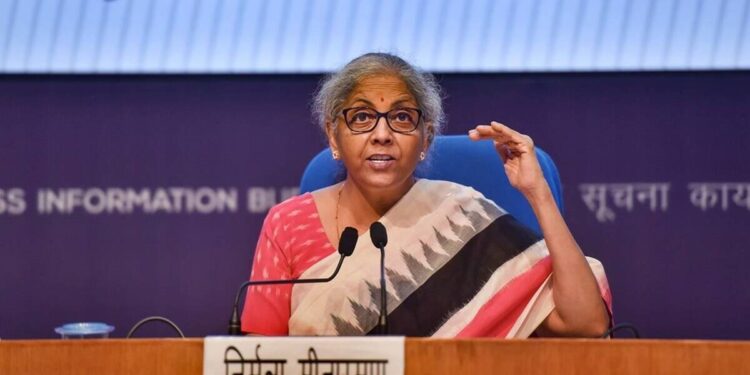Finance minister Nirmala Sitharaman on Saturday asserted that the rising interest rate scenario is unlikely to derail the government’s plans for a record budgetary capex of Rs 7.5 trillion in FY23 to spur economic growth.
The Goods and Services Tax (GST) Council, the minister said, is unlikely to consider rate rationalisation in its next meeting, as a report of a group of ministers (GoM), led by Karnataka chief minister Basavaraj Bommai, on this issue is yet to be submitted. Once it’s presented, the report will be circulated among states for inputs, Sitharaman said. The government and the GoM are looking at how to, at least, “achieve the revenue-neutral (RNR) rate at which the GST was brought in”, she said.
The rise in food and fertiliser subsidies in the current fiscal was somewhat accounted for when the Budget was being prepared, the minister said. Global commodity prices, especially of crude oil, were on the rise and supply chains were disrupted (at the time of Budget preparation), although “we didn’t have any clue about the (Russia-Ukraine) war”, Sitharaman said.
She said countries seem to be following a particular action template to deal with the trade-off between recovery and inflation in the aftermath of the pandemic, and the latest hike in key policy rates has been a globally synchronised event. The Australian central bank raised the rates, followed by the Reserve Bank of India (RBI) and the US Federal Reserve, to curb inflationary pressure.
Speaking at an event organised by a media house, Sitharaman said the RBI’s repo rate hike of 40 basis points wasn’t surprising, as many were expecting it in the wake of the monetary policy committee’s (MPC’s) indication in April that it was time for it to act. However, since the move came in between the two scheduled meetings of the MPC (in April and in June), it may have surprised some. “So, the act wasn’t surprising but the timing may have been for some,” Sitharaman said.
The revenue neutral rate for GST was originally estimated at 15-15.5% and the tax debuted at a slightly higher rate. A series of rate cuts since the tax’s July 2017 launch, aimed at spurring consumption in a faltering economy, has brought the weighted average GST rate down to the current level of around 11.5%, necessitating a rate rejig. A reduction in the number of GST slabs — four at present — to two has been recommended by several experts, who think that it would make the tax simple and further reduce the cascading of taxes.
“Of course, (GST) rate rationalisation has been a discussion point in 3-4 Council meetings. Wherever inversion prevails, we would correct it because we can’t afford to go on giving these refunds,” the minister said. The inverted duty structure, wherever it’s present, is discouraging investors from participating in the relevant production-linked incentive schemes, she added.
The finance minister has said during her recent meetings at various multilateral fora in Washington, there was greater concern among global bodies that cryptocurrencies, given that they mostly remain unregulated, must not be allowed to violate the FATF (Financial Action Task Force) norms. These must not be allowed to be misused as a tool for money laundering or terrorism funding.
Despite pressure by Western nations, India will continue to buy Russian oil if it gets the commodity at cheaper rates, the minister said, as she highlighted the broader effort to diversify the sources of supplies. At the same time, she stressed that the Western countries are increasingly understanding India’s position on the issue of oil purchases.
Asked about the possibility of hiking import duties on a broad range of products to suit the Aatmanirbhar Bharat initiative, the minister said taxes will be considered only on those products where there is adequate domestic capacity but imports from certain jurisdictions are still taking place due to predatory pricing. The Aatmanirbhar Bharat initiative, she stressed, doesn’t mean India will shut its doors to others; instead, it encourages greater integration with the global supply chain.
Earlier in the day, Sitharaman flagged anonymity of certain stakeholders as an “inherent risk” in the adoption of blockchain technology (cryptocurrencies, among others, are based on this technology). Addressing an NSDL event in Mumbai, she called for taking adequate precaution even while harnessing its potential for human welfare.
Nevertheless, she said using the distributed ledger technology (also called blockchain) is “absolutely imperative” and the government also supports its use. But it’s the anonymity that is an “inherent risk” “which we need to guard ourselves from”.
The minister hailed the growth in retail participation in the stock markets, especially in the wake of the Covid-19 outbreak, which has somewhat softened the blow of FPI outflows. From just 4 lakh in FY20, the number of new demat accounts added each month shot up to 12 lakh in FY21 and to 26 lakh in FY22, she said.













